I have always been fascinated by how people in North America and Europe used to live in the late 1800s and early 1900s, and I always loved to visit living history places. Unfortunately, there were not really many of these where I grew up, and they never compared to Greenfield Village at Ford in Michigan and a couple of the folk parks I visited in Ireland, including the Ulster Folk Museum. Last November, I went to Greenfield Village, and some of my photographs are included in the post Days Out: Henry Ford's Greenfield Village. At the beginning of June this year, I visited the Ulster Folk Museum after A Weekend in Belfast.
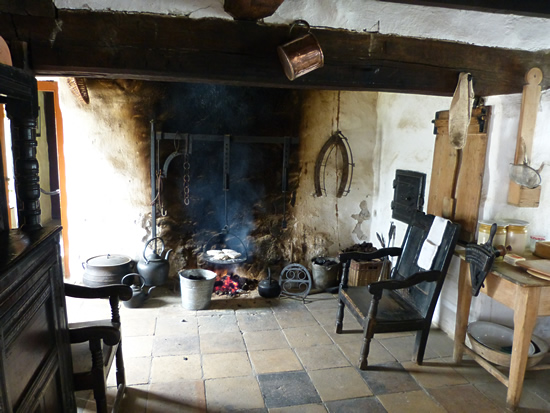
Irish soda bread cooking on the fire in a traditional Irish home
We visited the Ulster Folk Museum, which is a collection of several historic buildings from various parts of Ireland, after leaving Belfast behind us. The majority of the buildings are in the recreated town, named Ballycultra, but there's also some historic farms and other farm-related buildings on a rural trail. The buildings contain historic furniture and items to match the standard of that type of house or building in the time period.
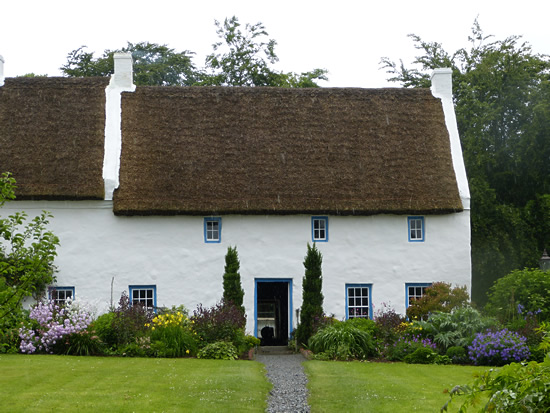
The Old Rectory
The house pictured above (The Old Rectory) was built in 1717, and it is English in design. Most of those who settled in Ulster were of Scottish origin. In the late 1700s, a retired captain who fought for the British in the War of American Independence lived in the house. By the 1800s, it was lived in by a minister Rev. McCullough and the house was extended. The house is furnished for a clergyman of the time 1890-1910. In my opinion, it is one of the more unique and nicer buildings.

Kitchen in Old Rectory
When we entered the house, there were a couple of women in period dress there to chat to us about the house, and they had soda bread on the fire. We explored the house noting all of the cobwebs and spiders in the wooden beams. Upstairs is a large room with the brickwork forming the chimney.
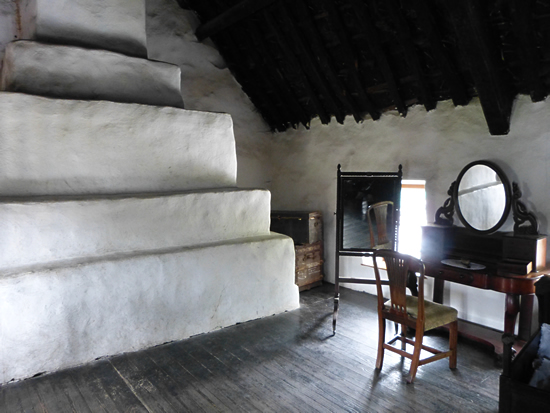
The furnishings looked modest enough, and the room held two beds, with chamberpots of course. I imagine that the parents and children shared this room.
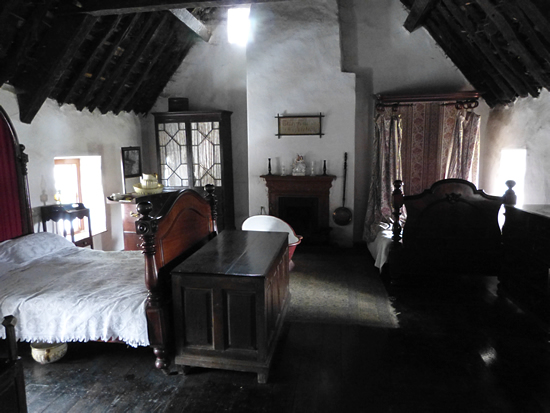
After visiting that house, we explored the remainder of the town area. There were plenty of shops and other businesses to visit. We visited the police station and read about a history of the police in late 1800s and early 1900s. We visited the courthouse and read some material about some real cases and punishments.
Afterwards, we visited the printer's and saw a collection of very old newspapers and saw a printing press in action. The upstairs of the printer's is a Newspaper Reading Room. In the 1800s-1900s, these were common in Ulster towns as a way to get news and information before they were replaced by libraries in the 1950s. There would be a subscription fee, but visitors could read newspapers from other parts of the world. Fascinating. This makes me realise how lucky (or unlucky) we are to live in a world where information is literally at our fingertips.
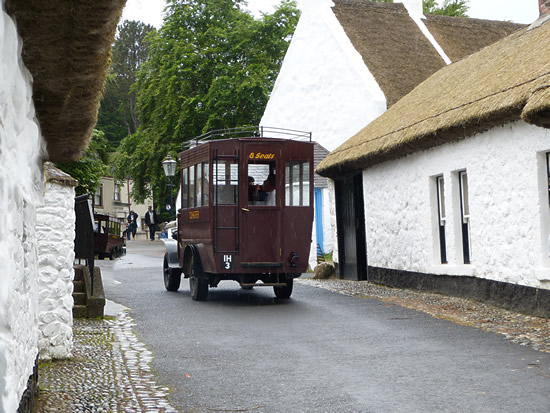
Old bus driving down road in Ballycultra
There was also a doctor's office, school, pub, post office, bank, clothing shop and factory, hardware shop, and several churches of different Christain faiths to visit and we went into all of these that were opened.
Off of "the triangle" (the town "square" is in a triangle shape in Ireland) is a tearoom, and we had a quick snack here. I had a cinnamon scone, which was really nice. Next door is the Picture House, a cinema for silent films that was used between 1909 and 1931. Refreshments could be purchased, but it was tea and a bun instead of soda and popcorn that we know today. When we visited, Charlie Chaplin was showing. We watched a little bit of it.
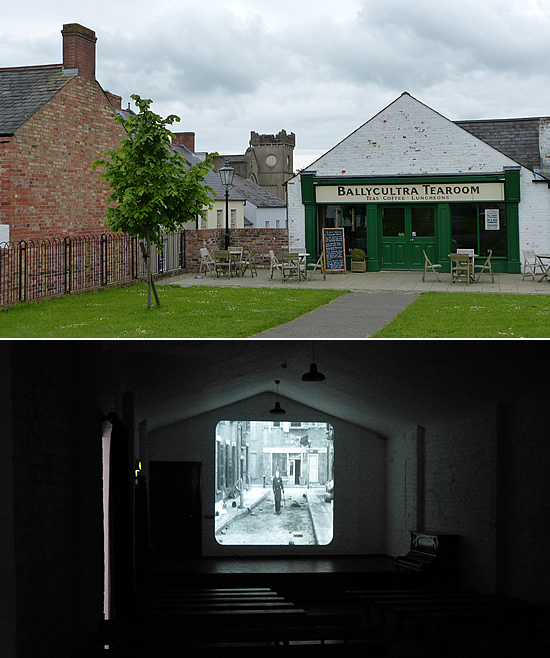
Tearoom and Picture House
A couple of buildings away from the cafe and Picture House is Meeting Street, a row of houses that also contained trades inside some of them, such as a bicycle repair shop and a shoe shop. These houses were built in the late 1800s.
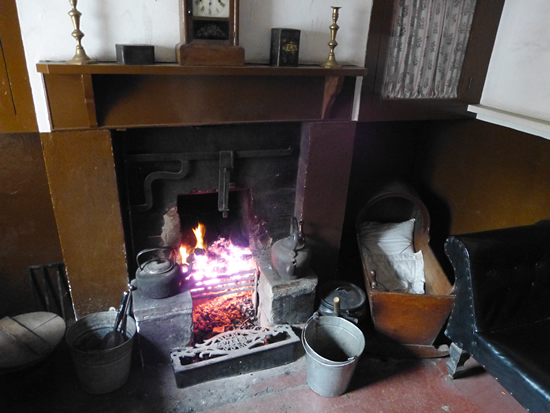
Meeting Street
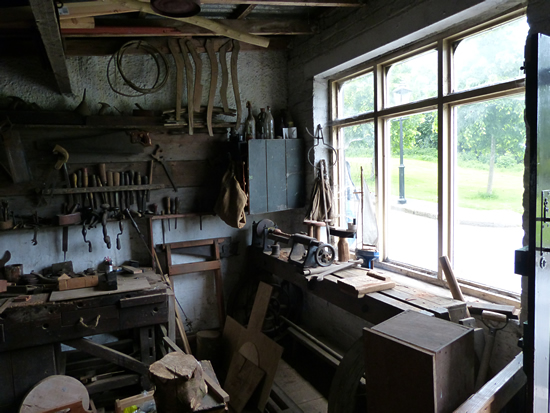
Shoe repairs shop
After wandering around a few of the other buildings in the town, we made our way to the rural trail. We saw this cute young donkey with its mother in one of the fields on the edge of the town.
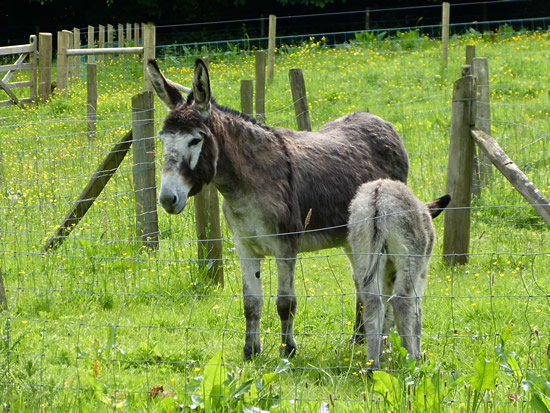
Donkey
Coshkib Hill Farm is one of the farms we visited on the rural trail, and the farm had chickens wandering outside. The family who owned the farm contributed to a lot of folklore, which including music and storytelling, and the house was used a lot as a social gathering place.
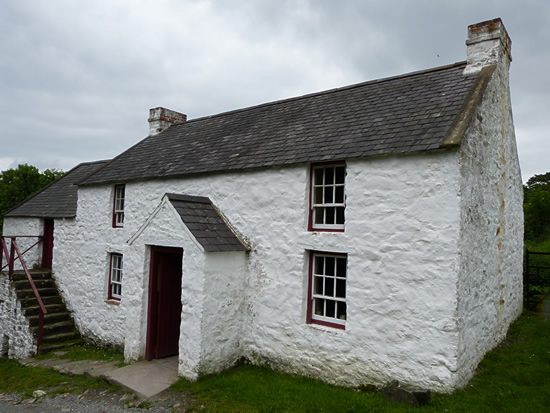
Coshkib Hill Farm
A photograph of the kitchen in the farmhouse is below. There are plenty of seats for visitors.
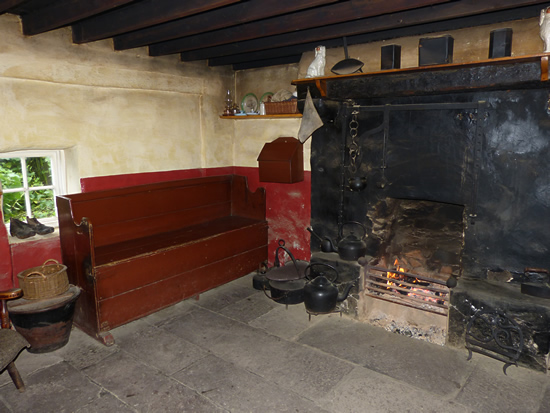
Coshkib Hill Farm kitchen
These chickens were pecking the ground outside.
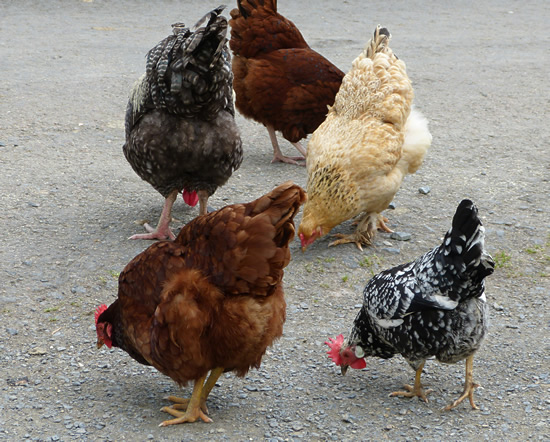
Coshkib Hill Farm chickens
Next, we went to Ballyvollen Houses, a collection of cottages.
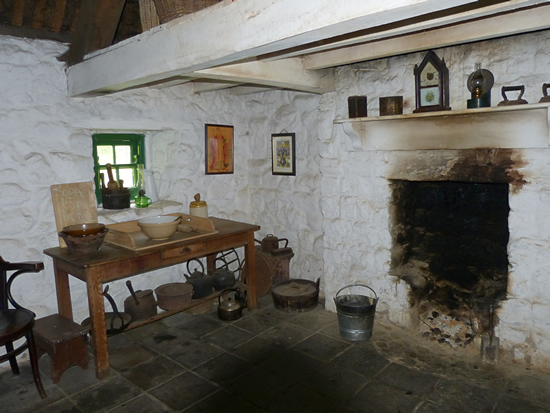
Ballyvollen Houses kitchen
Ballyvollen Houses are unique houses that have their roofs supported by English-style oak cruck-trusses (see photograph below), and they are thought to have originated in the 1600s. They were built by English settlers to the region of Lough Neagh and would have been used for salmon fishing. There is also a basket-maker's house next to these houses as that was an important trade for that particular area.
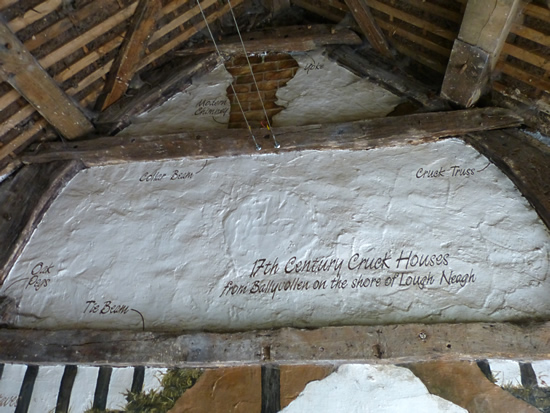
Cruck-trusses
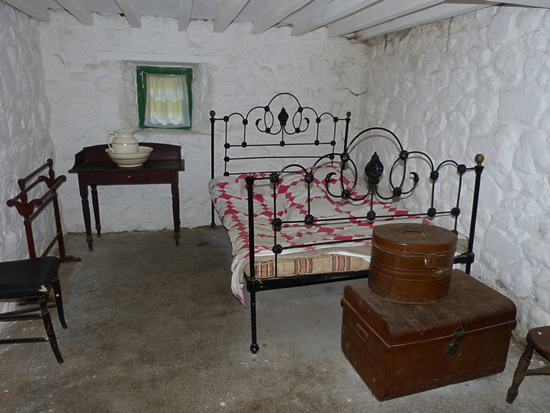
Bedroom - Ballyvollen Houses
Not far from these cottages is a blacksmith's cottage, Ballinderry House. It is a single-story house.
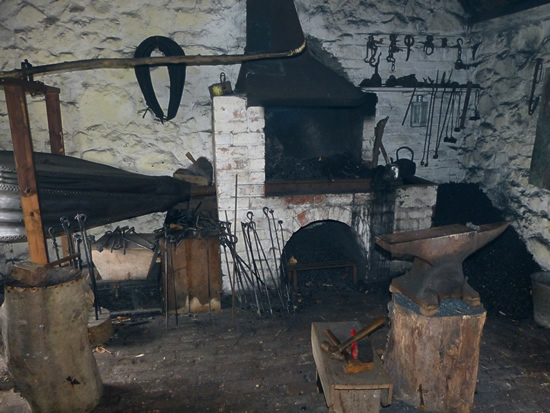
Blacksmith - Ballinderry House
Coalisland Spade Mill, located on the rural trail, was used to make spades for farming. It was not running at the time and was locked.
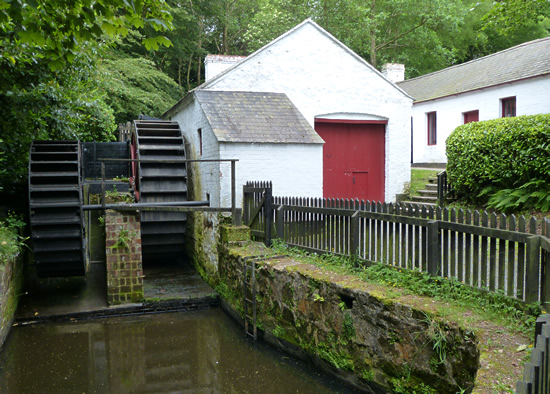
Coalisland Spade Mill
One of the small cottages on the rural trail is a blacksmith's forge. Unlike the one in the town, this one had someone working inside it.
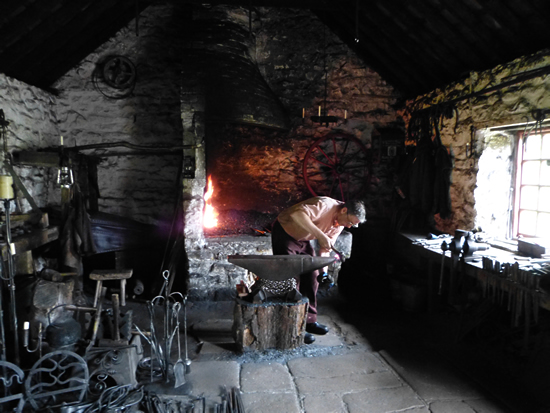
Lisrace Forge interior
Off to the side of the rural trail and in a little meadow is this small stone tower, known as Tulylish Bleach Tower. The tower was shelter for a watchman whose duty it was to guard rows of newly-woven linen that were stretched to bleach in the sun in the bleach field. (Linen's natural colour is brown, but it changes to white if left in the sunlight for a period of time.) Stealing this linen as it was bleaching was a common crime in Ulster.
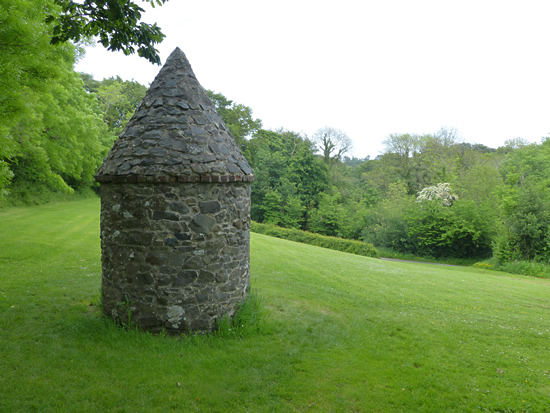
Tulylish Bleach Tower
Our final stop was The Cornershop. The Cornershop served the immediate neighbourhood in an area of a town or city. This cornershop has less of the goods that would be standard products that would be useful to buy, but sweets can be bought here.
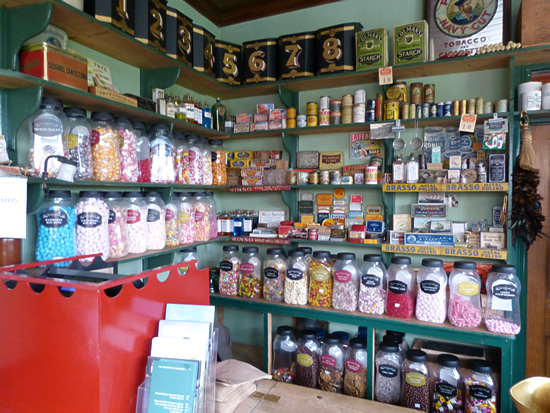
The Cornershop
There's a really nice guide on the museum's website that explains the history of each of the buildings: http://www.nmni.com/uftm/Collections/buildings
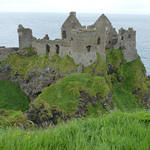
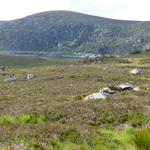
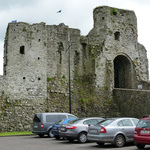
Leave a comment